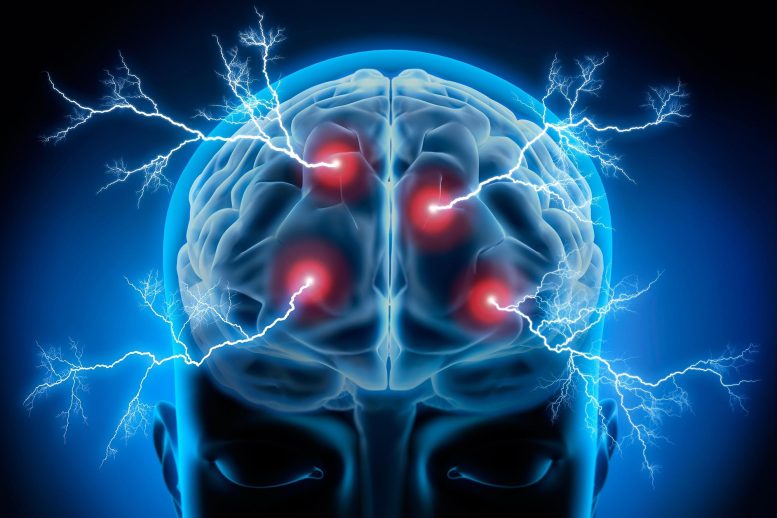
Autism, also referred to as Autism Spectrum sickness (ASD), is a complex developmental sickness that impacts communication, social interaction, and behavior. it is characterised by means of difficulties in verbal and nonverbal communication, social interactions, and repetitive behaviors.
a new examine led by way of Rutgers tuition has highlighted the abilities of imaginitive innovations in understanding and discovering mental issues.a brand new examine led by using scientists at Rutgers university has uncovered new insights into the underlying mind mechanisms of autism spectrum ailment (ASD). The examine, which spanned seven years, found that a selected gene mutation ordinary to be linked to ASD motives an overstimulation of mind cells this is enormously higher than in mind cells devoid of the mutation.
The research group used chopping-side techniques, including starting to be human brain cells from stem cells and transplanting them into mouse brains, to make these discoveries.
The work illustrates the skills of a brand new approach to discovering brain problems, scientists stated.
Describing the analyze within the journal, Molecular Psychiatry, researchers said a mutation – R451C in the gene Neurologin-3, wide-spread to cause autism in humans – become found to provoke a much better degree of communique among a network of transplanted human brain cells in mouse brains. This overexcitation, quantified in experiments by the scientists, manifests itself as a burst of electrical pastime greater than double the degree seen in mind cells devoid of the mutation.
"We had been shocked to discover an enhancement, now not a deficit," observed Zhiping Pang, an associate professor within the department of Neuroscience and cellphone Biology in the newborn fitness Institute of new Jersey at Rutgers Robert timber Johnson scientific faculty and the senior creator on the analyze. "This profit-of-feature in these specific cells, revealed with the aid of our examine, reasons an imbalance among the many mind's neuronal community, disrupting the standard advice circulate."
The interconnected mesh of cells that constitutes the human mind includes specialized "excitatory" cells that stimulate electrical exercise, balanced via "inhibitory" brain cells that curtail electrical pulses, Pang referred to. The scientists discovered the outsized burst of electrical activity brought about with the aid of the mutation threw the mouse brains out of kilter.
Autism spectrum disease is a developmental incapacity brought about by using alterations within the brain. About 1 in forty four children had been recognized with the disorder, in accordance with estimates from the facilities for ailment manage and Prevention.
experiences imply autism is usually a outcome of disruptions in usual brain increase very early in construction, according to the national Institutes of health's national Institute of Neurological problems and Stroke. These disruptions can be the outcomes of mutations in genes that manage brain building and modify how mind cells communicate with each different, in keeping with the NIH.
"So plenty of the underlying mechanisms in autism are unknown, which hinders the building of constructive therapeutics," Pang talked about. "the use of human neurons generated from human stem cells as a mannequin equipment, we desired to take note how and why a particular mutation motives autism in humans."
Researchers employed CRISPR technology to alter the human stem cells' genetic cloth to create a line of cells containing the mutation they wanted to look at, and then derived human neuron cells carrying this mutation. CRISPR, an acronym for clustered continually interspaced brief palindromic repeats, is a different gene-modifying technology.
in the examine, the human neuron cells that have been generated, half with the mutation, half with out, had been then implanted within the brains of mice. From there, researchers measured and compared the electrical undertaking of certain neurons employing electrophysiology, a branch of physiology that stories the electrical houses of organic cells. Voltage adjustments or electrical latest will also be quantified on a lot of scales, reckoning on the size of the article of examine.
"Our findings imply that the NLGN3 R451C mutation dramatically impacts excitatory synaptic transmission in human neurons, thereby triggering changes in overall network homes that may well be concerning mental disorders," Pang referred to. "We view this as very crucial information for the box."
Pang stated he expects many of the strategies developed to conduct this scan to be used in future scientific investigations into the groundwork of different brain problems, corresponding to schizophrenia.
"This analyze highlights the advantage of the usage of human neurons as a mannequin equipment to examine mental issues and strengthen novel therapeutics," he observed.
Reference: "Analyses of the autism-associated neuroligin-3 R451C mutation in human neurons display a benefit-of-function synaptic mechanism" by way of Le Wang, Vincent R. Mirabella, Rujia Dai, Xiao Su, Ranjie Xu, Azadeh Jadali, Matteo Bernabucci, Ishnoor Singh, Yu Chen, Jianghua Tian, Peng Jiang, Kevin Y. Kwan, ChangHui Pak, Chunyu Liu, Davide Comoletti, Ronald P. Hart, Chao Chen, Thomas C. Südhof and Zhiping P. Pang, 24 October 2022, Molecular Psychiatry.DOI: 10.1038/s41380-022-01834-x
The study become funded through the Robert timber Johnson basis, the Governor's Council for medical analysis and treatment of Autism, and the country wide Institute of intellectual health.

Post a Comment